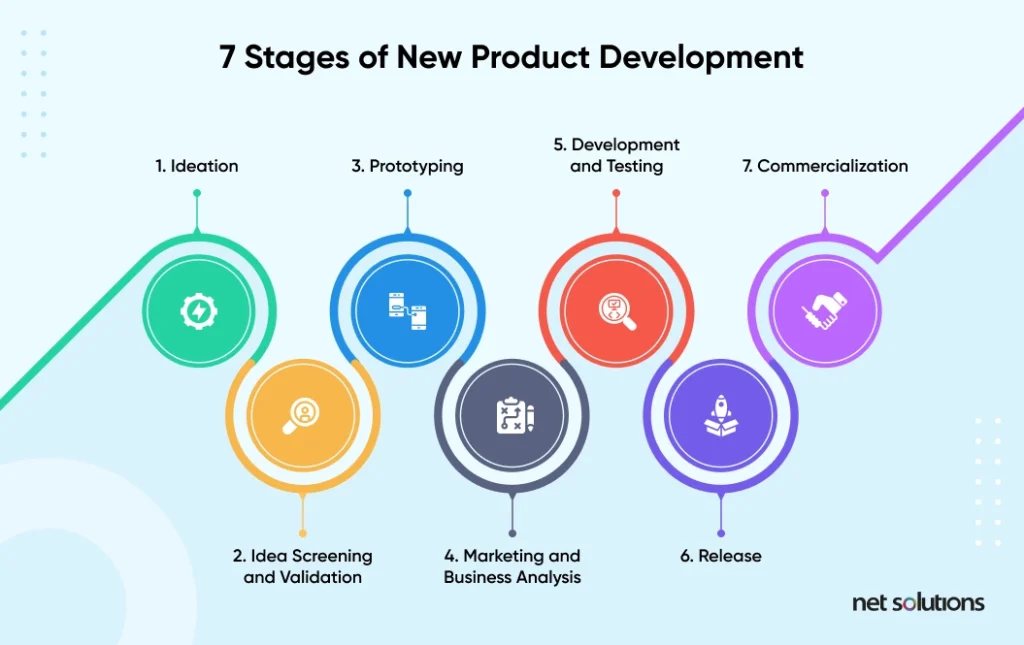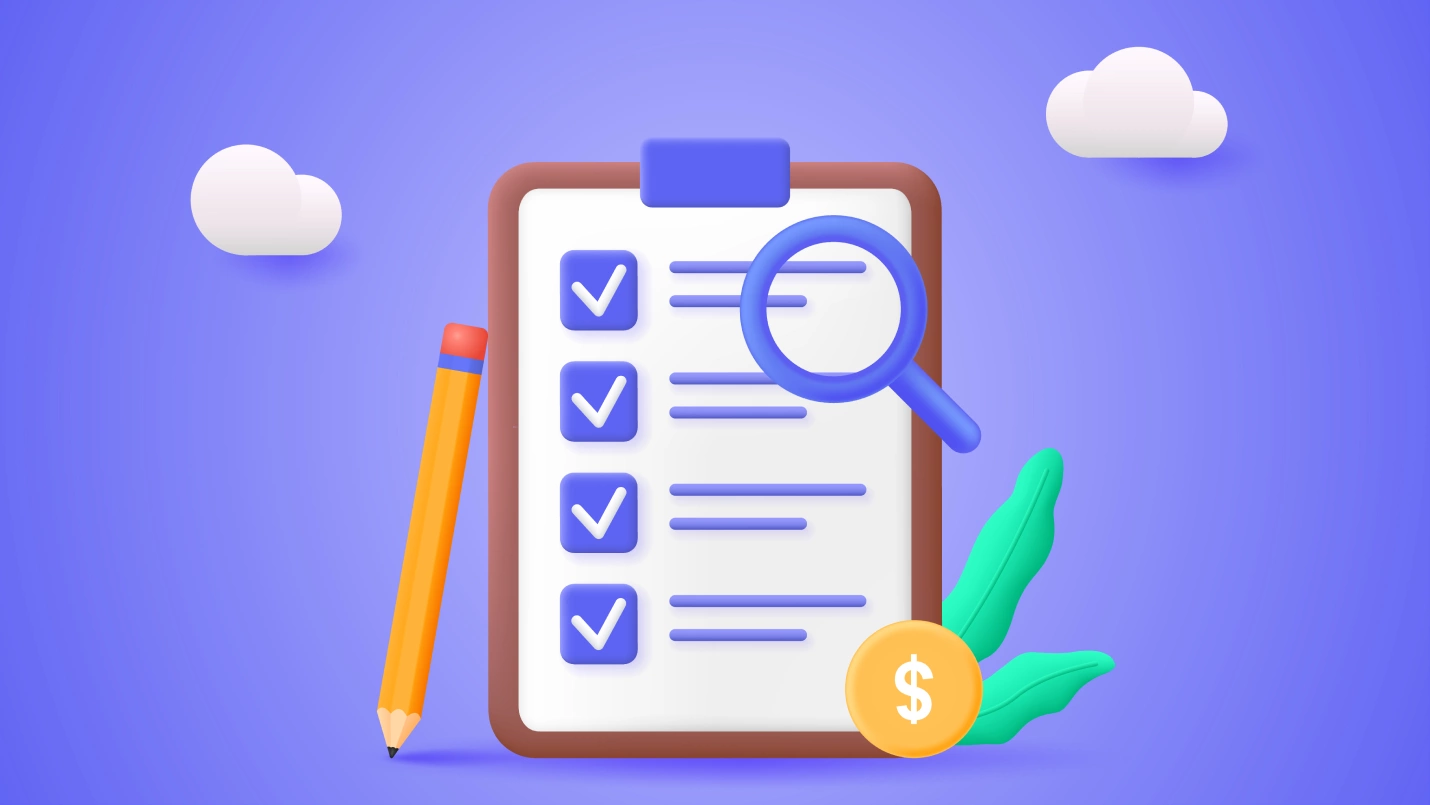New product development involves great ingenuity and creativity, but all that energy and drive requires focus and organization. With a strategic product development process, designing, building, and marketing a successful product in competitive software markets is easier.
That’s why software development thought leaders have identified best practices in product management, taking software teams from concept and design to product release and commercialization.
A product development checklist is essential if you’re looking to design, build, and release a new software product. This blog post provides a clear, step-by-step template for project managers and product teams to follow.
Why You Need a Product Development Checklist
Successful software products usually don’t happen by chance. They typically adhere to a roadmap based on a larger business plan, and product development teams use their resources wisely to optimize workflows and build competitive products.
A thorough product development checklist will ensure that you:
- Work efficiently
- Create a product with the market in mind
- Develop features that provide the best return for your effort
- Minimize rework
- Ensure all your team members understand how their work contributes to the larger picture
Net Solutions’ software product development checklist will ensure you hit all the important marks, delivering a product designed to succeed.

We respect your privacy. Your information is safe.
Comprehensive Software Product Development Checklist: Stage by Stage
Net Solutions’ software development checklist will take you through the seven key stages of product development. It begins with idea generation and concludes with bringing your new product to market.

The seven stages of the new product development process are:
- Ideation: Brainstorm problems that you could potentially solve for customers
- Idea screening and validation: Explore the viability of your ideas and make sure there’s a market for it
- Prototyping: Develop a rough model or mockup of your idea to demonstrate how the product works, gather feedback and explore different approaches to design
- Marketing and business analysis: Research to understand what the market wants
- Development and testing: Perform Quality Assurance (QA) to find bugs and improve performance
- Release: Create and implement a strategy for product releases, including building marketing buzz and beta testing
- Commercialization: Implement your go-to-market strategy
While it might be tempting to skip a few steps here and there, successful products come from teams that follow a clear plan and leave no stone unturned.
Stage 1: Ideation
It’s been said many times that every great invention begins with an idea, but that’s only part of the equation. The truth is that nearly every great software product was selected from dozens of ideas produced by a team that brainstormed them through a discovery process.
From that larger set of possibilities, product teams explore the viability of each idea and narrow them down to one concept before moving forward.
Product Ideation Steps
- Conduct market research to identify customer needs
- Explore customer feedback on existing products to identify pain points
- Brainstorm possible solutions to each pain point
- Explore the effort and risks involved in different product ideas
- Narrow your ideas down to a short list of the most viable product ideas
Once you’ve documented and organized the top ideas, you’ll proceed to the next step—screening and validating each prospective solution.
Stage 2: Idea screening and validation
During the screening and validation stage, evaluating the feasibility and the market demand for your top ideas is important. Whatever attachment you have to a given idea, you need objective metrics that back up its potential for success.
Idea Screening and validation steps
- Gather user feedback from any existing products
- Conduct market surveys
- Perform prospective client interviews
- Consider conducting focus groups and running pilot tests with your target market
- Analyze the market size and current competition offered by similar products
- Assess the scalability of each product idea
- Determine the sustainability of each concept
- Explore any related revenue opportunities for each idea
You will then select a winning idea based on the criteria listed above, assuming you’ve got an idea that shows promise. If not, return to the ideation stage and brainstorm new opportunities.
Stage 3: Prototyping
Prototypes help you visualize the user experience and evaluate potential features before designing and building an application. Prototyping can range from simple mockups to complex, interactive, high-fidelity prototypes.
Prototyping steps
- Create prototypes based on proposed features, guided by market research
- Conduct usability testing with potential users
- Iterate on the prototype based on feedback, refining the design accordingly
- Collaborate with designers, developers, and stakeholders to ensure the prototype aligns with the product vision.
Prototyping saves a great deal of time, energy, and resources, allowing your design and development teams to focus their energy on building a User Interface (UI) that customers find appealing and implementing the features they’re willing to pay for.
Stage 4: Marketing and business analysis
Marketing and business analysis are key to understanding how to position your software product against competing apps and assessing market trends so you can stay on top of them.
Given the ever-changing market landscape, you should conduct your business and market analysis parallel to product development (Stage 5). In other words, while designers and developers are busy creating the product, your marketing team can dive deep into the market data.
Marketing and business analysis steps
- Conduct comprehensive market research to understand your target audience
- Perform a thorough competitive analysis, noting the strengths and weaknesses of competing products
- Determine your pricing strategy and revenue model
- Identify your distribution channels
- Plan your promotional strategy
Calculate your Return on Investment (ROI) for each choice, from features to include in the first version to promotional techniques. Don’t be afraid to adjust the development plan or add new functionality if it supports the bottom line and the market demands it.
Stage 5: Development and testing
Design and development is where that magic happens—taking your software idea from an abstract concept to a tangible, working product. Continuous testing throughout the development process helps identify bugs and performance issues that could cost you significantly down the line, so don’t neglect proper Quality Assurance (QA).
Development and testing steps
- Define the project scope and strategy, identifying whether you are building a Minimum Viable Product (MVP) or a more full-fledged software application
- Choose a product development methodology that suits your product requirements, such as Agile or Waterfall
- Set your timeline and note the milestones you plan to reach along the way
- Break tasks into actionable, measurable units
- Employ best practices in coding and conduct regular code reviews
- Perform comprehensive testing, including:
- Functional testing
- Performance testing
- Security testing
Establishing clear communication at every stage of the development process helps keep projects on time and budget, dramatically increasing your odds of success.
Stage 6: Release
Product release is a key step in any product launch strategy, requiring a clear, focused plan to help ensure success. A flawed release can sink an excellent product, so consider your release plan.
Release steps
- Prepare user guides to help your first set of users understand the product and find answers to any questions they might have
- Conduct beta testing and gather feedback from early adopters
- Fix any bugs before the official launch
- Build buzz around your product through social media and other marketing campaigns
- Coordinate with Sales and Support departments to create a seamless transition from launch to full-scale commercialization
Every step in the release process sets the stage for commercialization, where you’ll officially launch the product and hopefully set yourself apart from your competitors.
Stage 7: Commercialization
The final stage of the product launch checklist is commercialization. During this phase, you’ll introduce the product to a larger market beyond your beta testers. Commercialization will bring new user feedback, and your product teams will use that data to improve the software and adapt to user requirements. It’s all part of a product life cycle involving new iterations and expanded functionality to serve end users better.
Commercialization steps
- Set up Customer Support and identify channels for users to report issues and ask questions
- Analyze customer feedback and user needs to ensure customer satisfaction in future releases
- Plan regular product updates and maintenance
- Observe market trends and integrate them into the product roadmap
- Adapt and refine your advertising and marketing plan to gain deeper market penetration
Product requirements will inevitably shift with more feedback, and product teams can use this information to build a product that turns users into promoters and drives revenue.
Need Help With Software Product Development?
Product development is a complex, multi-faceted endeavor, and hiring in-house team members can be costly and inefficient compared to outsourcing some or all of the process. Net Solutions has developed software products for industry leaders and world-renowned institutions, from IMG to the Harvard Business Review, along with startups with innovative new solutions.
We can support or completely manage every stage of the product development process: Market analysis, project management, UI and UX design, software development, and Quality Assurance (QA).





